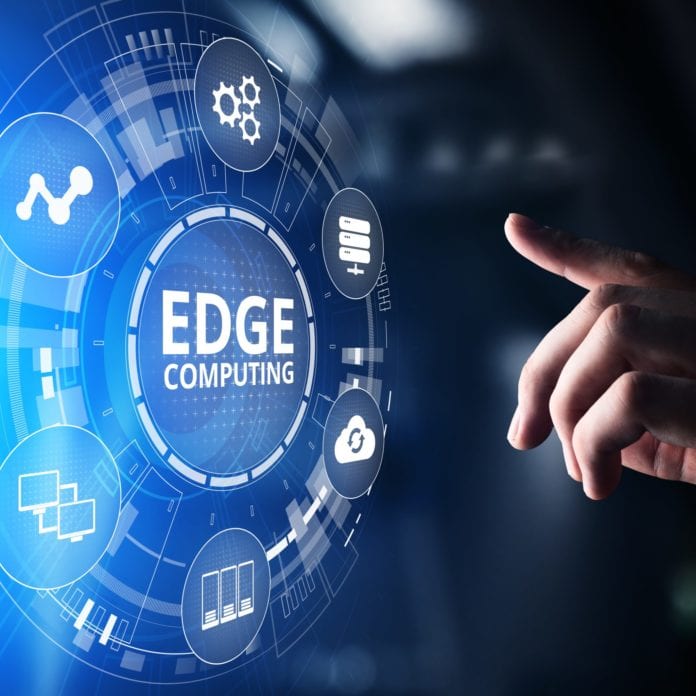‘We believe in its potential,’ Vodafone said of MEC
At the Mobile Edge Forum, Vodafone’s Global Edge Computing and 5G Principal Joanna Newman and Senior Global Product Manager Elizabeth Rumsey spoke about “the perfect storm” of tech advancements that’s been brewing the past several years. And while 5G may be at the heart of this storm, Vodafone has also been focused on the coming opportunities around mobile edge computing (MEC), and in doing so, has identified five key areas to spur MEC monetization: Mixed reality, video analytics and streaming, live video production, V2X communication and artificial intelligence at the edge.
“We looked at the coming opportunity with MEC a few years ago … because we recognized the potential for the 5G application space to be over a billion-euro market, just within our European footprint over the next five to potentially 10 years,” Rumsey shared. “We do believe in [its] potential, and we believe that one of the key factors to bring that potential to life is to make the experience easy for our customers.” Therefore, she continued, Vodafone has prioritized bringing together 5G connectivity and the edge compute to create a “seamless infrastructure and application experience.”
While Vodafone didn’t question the potential of edge computing, it did initially have to ask the familiar question of “is there a killer use case?”
“Over the period … there’s been a question mark around, is there a killer app for edge? I would say, in my experience … the answer to that is no,” said Rumsey, adding that she believes this to be a good thing. “Because that shows the extent to which edge computing has use cases that go across a wide range of industry verticals,” she continued.
In partnership with Festo, Vodafone has been exploring AR and VR training applications. Newman provided more details: “There’s a lot of really interesting use cases coming from the AR/VR training, especially for national utility type organizations. Whether it’s an electricity grid or a gas turbine, or a solar farm, et cetera, there’s a lot of mechanics and training that needs to be done to be a skilled worker that can go out in the field and be able to maintain things,” she stated.
As part of its 5G pilots in Italy, Vodafone has conducted MEC trials in the live video streaming category, where it is enabling ambulances to connect directly to the hospital to provide live video streams of what is happening inside the ambulance. These streams allow first responders to share patient information and diagnostics with hospital staff before the patient even arrives on site.
“The hospital [is] receiving remote instructions, so that they [can] do their best to help the patient. And when the patient arrive[s] at the hospital, the hospital [is] best prepared to support that patient,” Rumsey said.
In this particular example, a reliable, low-latency connection is needed on both sides: The hospital where the video is being streamed and inside the ambulance where the steam is being produced live.
Newman acknowledged that for some use cases, like V2X, which are critical in the sense that they could be life affecting, edge computing is “a little ways away” from rollout. However, she did confirm that Vodafone is currently participating in some trials with V2X in Germany. Vodafone began developing an open V2X platform called Safer Transport for Europe Platform (STEP) in November 2021, and this September announced that is it now available to developers in Germany.
While the speakers didn’t provide specific examples of AI at the edge — perhaps that is because it’s such a broad application — Newman did detail several additional scenarios in which intelligence at a local edge makes a material difference, from gaming to healthcare to government security.
“Don’t forget that [with] edge processing, because it’s done closest to the customer, you can also very easily comply with some local processing directives that apply to in-country data processing, be it for healthcare records or data sovereignty requirements,” Newman explained. “There’s a lot of different elements where edge can be helpful [by] taking advantage of its low latency and its local processing to comply with local regulation that it can be quite useful.”
According to Rumsey, the majority of Vodafone’s customers using multiple cloud environments and the vast majority those that are, are working with more than one public cloud provider. “Therefore, our strategy is one of non-exclusivity,” she said, adding that Vodafone is committed to helping its customers manage this multi-vendor environment through its own multi-cloud platform. She also claimed that half of its customers are moving beyond the distributed cloud. “Which underpins our investment that we’ve been making in MEC,” she said.

